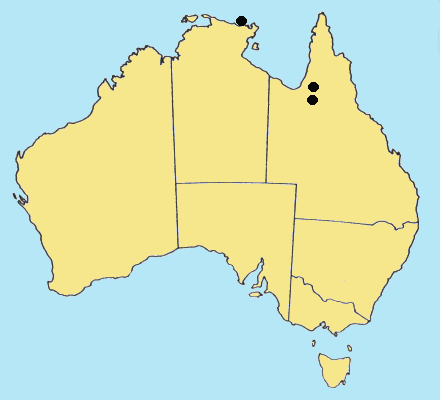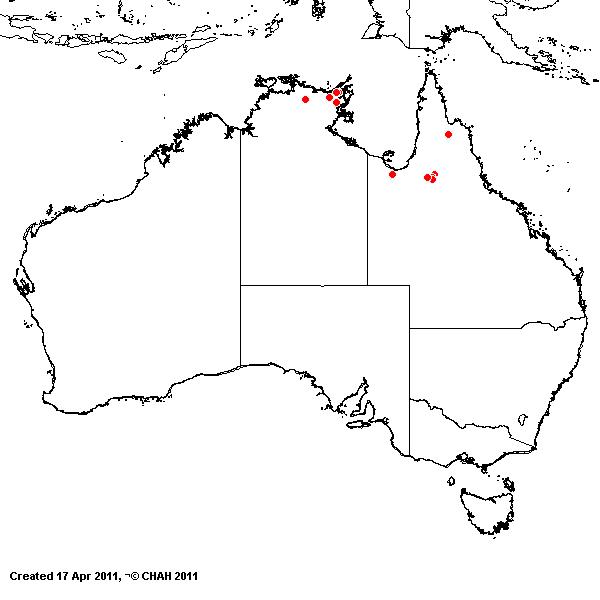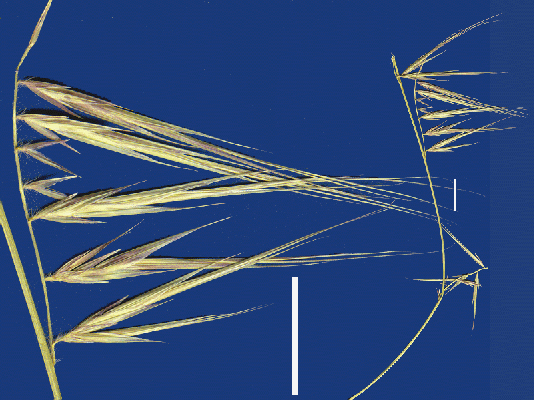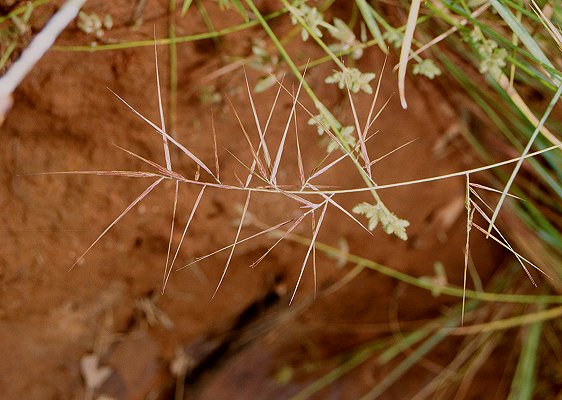Ectrosia blakei C. E. Hubbard. Hooker's
Icon. Pl. ser. 5, 4 t. 3312: 4–5 (1936).
Classification.
(GPWG 2001) : Subfamily Chloridoideae. Cynodonteae.
Type of Basionym or
Protologue Information: IT: S.T. Blake 9104, 22 May 1935, Australia:
Queensland: Burke Dist. (US-3104999).
Key references
(books and floras): [2002] D.Sharp & B.K.Simon, AusGrass, Grasses of
Australia.
Habit. Annual.
Culms erect or geniculately ascending, stature slender to delicate, 10–45 cm
tall, 1–4 -noded. Mid-culm internodes glabrous or pubescent. Lateral branches
branched. Leaf-sheaths glabrous on surface or hairy. Ligule a fringe of hairs.
Leaf-blades flat or involute or convolute, 5–10 cm long, 1–2.5 mm wide.
Leaf-blade surface scaberulous, glabrous or indumented.
Inflorescence.
Inflorescence compound, a panicle. Panicle oblong, 5–10 cm long, 4–8 cm wide.
Spikelets.
Spikelets pedicelled. Fertile spikelets many flowered, with at least 2 fertile
florets (5–6), comprising 5–6 fertile floret(s), with diminished florets at the
apex, linear or oblong, laterally compressed, 15–20 mm long.
Glumes. Glumes
similar. Lower glume lanceolate, membranous, keeled, 1-keeled, 3 -nerved. Upper
glume lanceolate, 4.5–5.2 mm long, membranous, keeled, 1-keeled, 3 -nerved.
Florets.
Fertile lemma 6–11 mm long, keeled, 3(–5) -nerved. Lemma surface glabrous.
Lemma apex entire, muticous or awned, 1 -awned. Median (principal) awn 1–18 mm
long overall. Palea 2 -nerved. Anthers 3. Grain 1.5–2 mm long.
Continental
Distribution: Australasia.
Australian
Distribution: Northern Territory, Queensland.
Northern Territory:
Darwin & Gulf. Queensland: Burke.
Notes.
Conservation status 2V (J.D.Briggs & J.H.Leigh, Rare or Threatened
Australian Plants 141 (1995)): having a distribution ranging less than 100
kilometres, and vulnerable to disappearing from the wild through continued
depletion and habitat disturbance.
Endemic;
restricted to a small area about 200 km inland (ESE) from the SE corner of the
Gulf of Carpentaria, Qld and Elcho Island, N.T. Recorded habitats include the
sandy bank of a small creek, with Ectrosia leporina and Eragrostis
speciosa, and open depressions on whitish sand.




